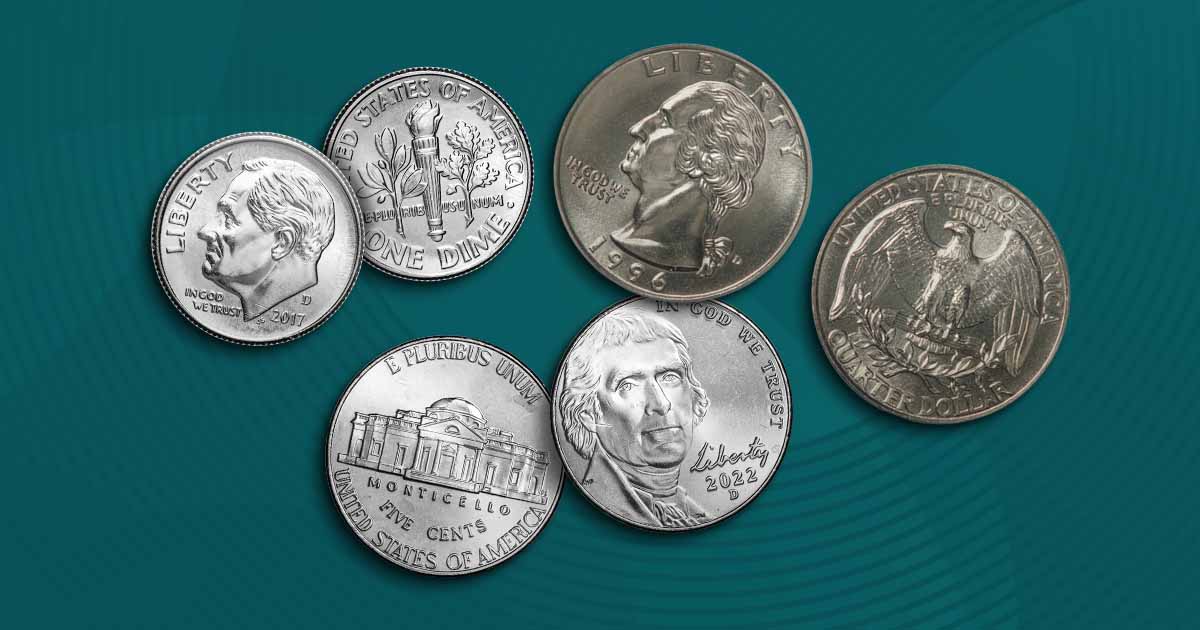
COVID-19 Has Had a Massive Impact on Coin Circulation
COVID-19 has changed a lot of things. But one impact this pandemic has had is something most people wouldn’t think about: coin circulation.
The United States Mint is busy crafting new coinage all the time, including pennies, nickels, dimes, quarters and more. They contributed 17% of newly minted circulating coins in 2019. The rest came from third-party coin processors and retail.
How Coin Circulation Affects the Economy
Coins circulate through the economy as people spend money. When you go to the convenience store and buy a soda with change, that money is put in the register. Then the register is added to the cash box, which is taken to a bank.
Banks, coin processors, and retailers will put coins back into the economy. Usually, this works enough to keep the coins moving where they need to be, but problems occur when part of that cycle breaks, with the COVID-19 pandemic that’s been the problem. Since people aren’t going out as much, coins that would usually make their way back into the system aren’t actually getting spent. That means shortages.
The U.S. Mint is making more coinage than it has in 20 years, but it’s not enough. They have been trying to lower the risk of exposure to COVID-19 for their employees as well, and that means lowering the number of employees per shift. Even with that, they’re minting an average of 1.65 billion coins per month, as opposed to 1 billion in 2019.
Current Coin Circulation Problems
You may have seen the signs at fast-food restaurants, gas stations, and grocery stores. “Please use exact change,” or “Use card if possible” are some of the messages that you might have noticed. Or you may have seen some of the buy-back programs where companies are asking for coins and offering free stuff in return.
That’s not something that happens normally. Business and bank closures disrupted the supply chain and circulation patterns, and when that began to happen, the Federal Reserve stepped in. They placed a temporary cap on coin orders from the central bank to ensure coins went where they were needed.
Coin Allocation
Allocation is a bigger issue than volume. As of April 2020, the U.S. Treasury estimated that $47.8 billion worth of coins were circulating. That’s slightly up from the year before. The issue is more about making sure supply is getting where it needs to go. And it’s an unusual problem to have.
The Fed is usually concerned with big companies and economic concerns. Figuring out how to make sure laundromats have quarters is not its usual work. But it’s important — cash is used in 49% of payments less than $10.
The Federal Reserve has established a task force to make sure businesses get the coins they need to stay afloat. In the meantime, the U.S. Mint will continue cranking out new pennies, nickels, dimes, and quarters to stay ahead of demand. But this isn’t a great long-term solution.
Each new penny or nickel produced actually costs more to make than the coin is worth, with pennies costing $0.019 and nickels $0.076. And credit card transactions that have replaced much of the coin volume for small purchases require extra fees, which hurt small businesses over the long term.
Moving Forward
It’s a multi-pronged problem and will require a multifaceted solution. In the meantime, the Fed and the U.S. Mint are asking people to pay with exact change and return their spare change to circulation. It may not seem like much, but in this case, every penny helps.




